Filipino cuisine isn’t just known for its savory food but is also well-regarded for its wide array of desserts to offer.
Sweets and desserts always bring people together. Everyone loves to huddle around the party table for these treats that are the perfect ending to any gathering!
So if you are craving something sinful, decadent, or deliciously satisfying, I will be sharing the top 10 most popular desserts in the Philippines in no particular order.
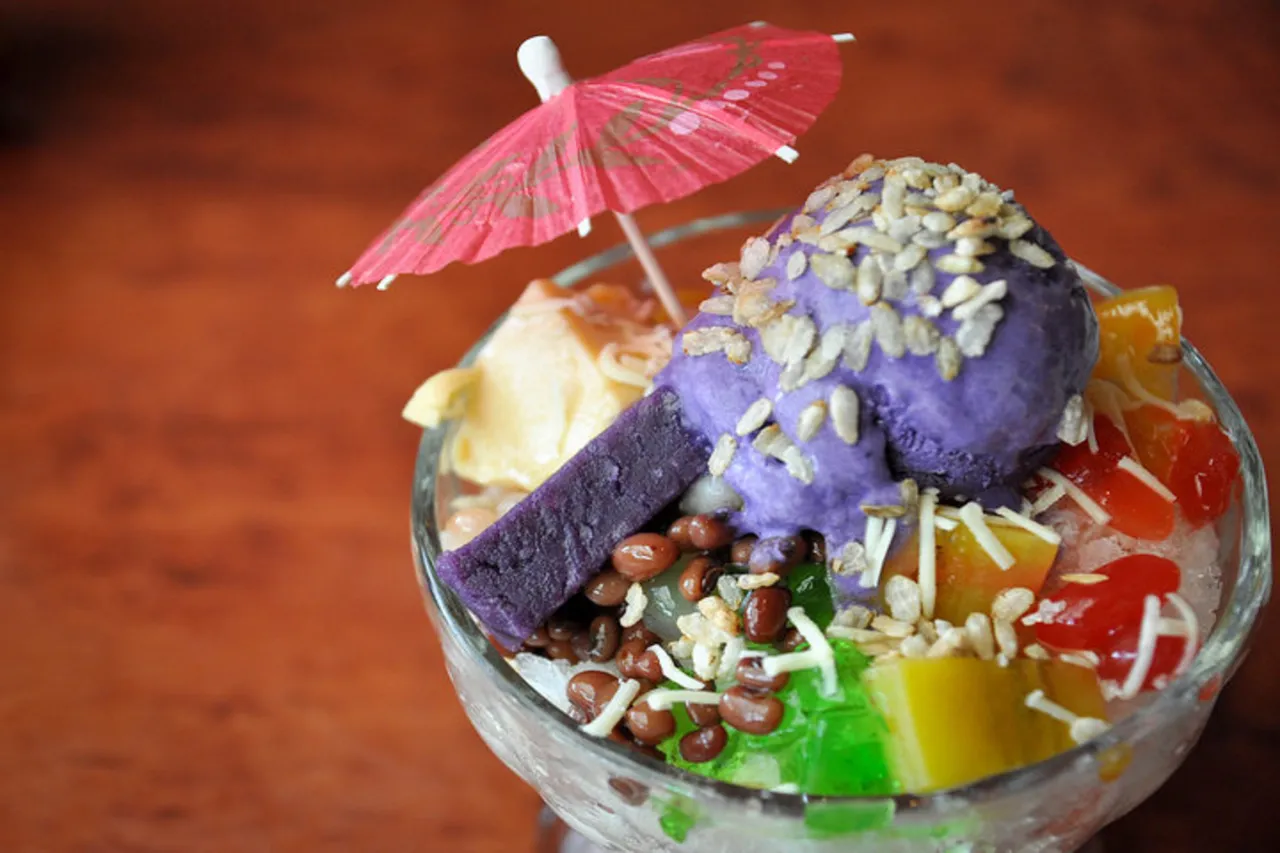
1. Halo-halo
Stands for mix mix is a popular Filipino cold dessert which is a combination of crushed ice, evaporated milk, and various ingredients including among others are yam, sweetened beans, coconut strips, tapioca, seaweed gelatin, pinipig rice, boiled root crops, and cubes fruit slices, leche flan, and trucked with a scoop of ice cream.
Halo-halo is believed to be an indigenized diversion of the Japanese kakigori class of desserts, originating from pre-war Japanese migrants into the islands. Over the years, more native ingredients were added resulting in the development of the modern Halo-halo.

2. Taho
Taho is a Philippine snack food made of fresh soft silken tofu, arnibal, sweetener and flavoring, and tapioca pearls. This staple comfort food is a signature sweet and Taho vendors can be found all over the country. Most to their vendors prepare the separate ingredients before dawn. The main ingredient fresh soft silken tofu is processed through a consistency that is very similar to a very fine custard.
The brown sugar is caramelized and mixed with water to create an amber colored syrup. Flavors like vanilla are sometimes added to the arnibal. Tapioca pearls purchased from the local market are boiled to a gummy consistency until they are a translucent white.
Taho vendor is a common sight in the Philippine streets. They carry two large aluminum buckets that hang from each end of a carrying pole. The larger bucket carries the tofu base and the smaller bucket holds the arnibal and tapioca pearls.
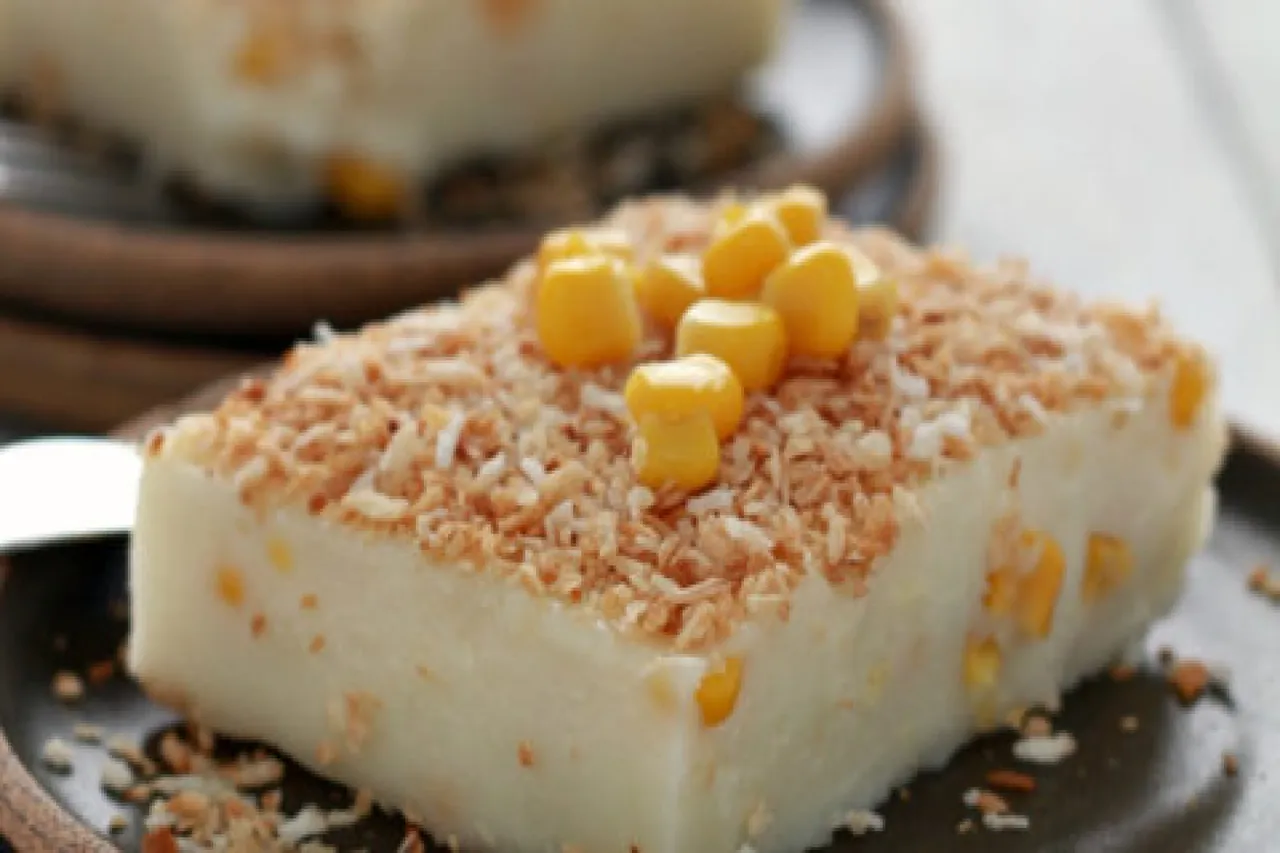
3. Maja Blanca
Maja Blanca is a Filipino dessert made primarily from coconut milk also known as ‘coconut pudding’. It has the consistency of thick gelatine and a delicate flavor and is creamy white in color.
It is relatively easy to prepare a coconut milk and cornstarch mixture is heated to boiling over a low flame while stirring. Corn kernels milk and sugar are also often added.
Once the mixture thickens it is then poured into serving dishes previously greased with coconut oil and allowed to cool. Once firm, ‘latik’ brown coconut cream curds are then sprinkled as toppings. It is also often refrigerated and served cold to improve the texture.
The corn kernels and latik are used to add different textures to the Maja Blanca which by itself usually has a creamy texture.
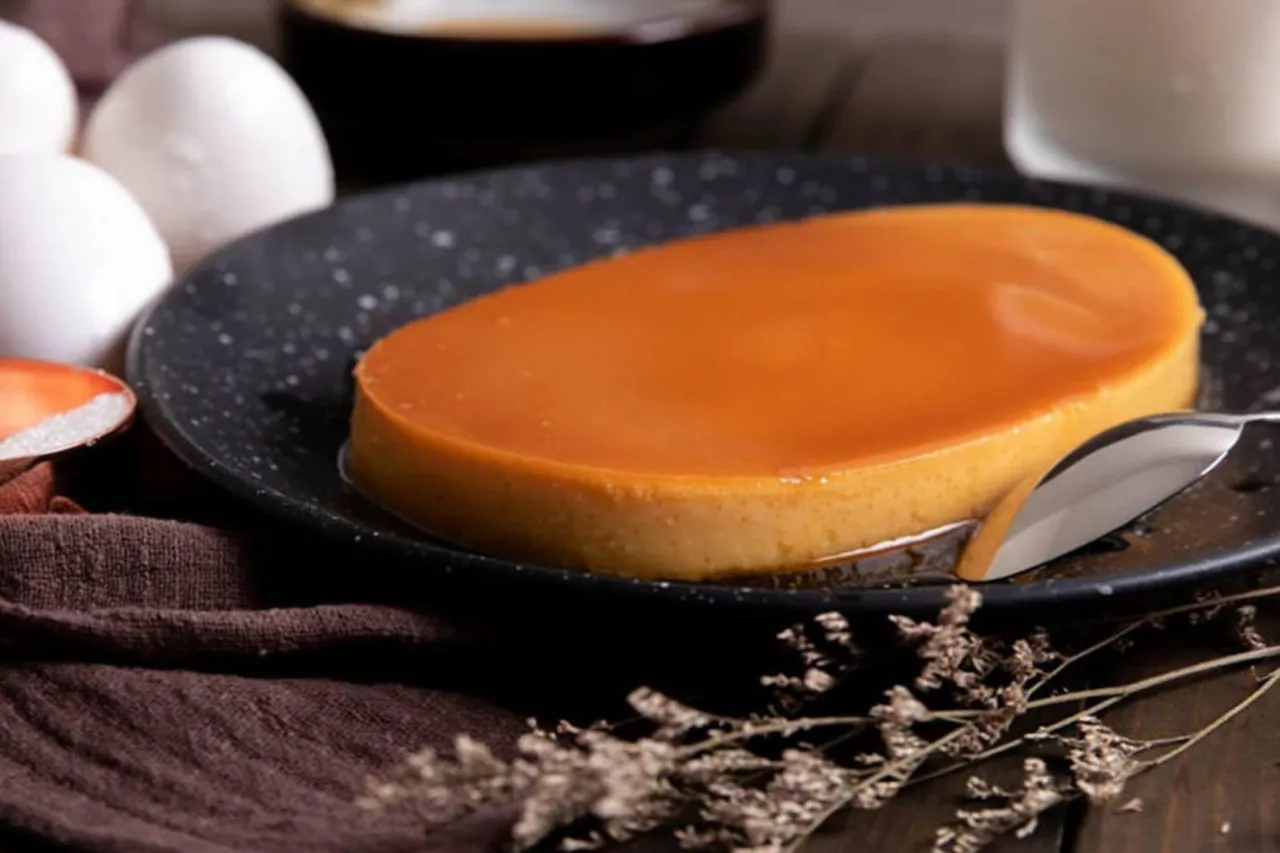
4. Leche Flan
Leche Flan is the Filipino version of creme caramel. It is a sweet dish traditionally served as deserted parties fiestas and other special occasions.
It is also commonly used as topping for shaved ice such as Halo-halo or in other treats such as floating island or graham de leche. Leche Flan is a dessert made up of eggs and milk with a soft carame on top. It resembles creme caramel and caramel custard.
It can also be added as a component to build other great tasting dessert creations. The word leche means ‘milk’ in Spanish and leche flan is a local term derived from the original Spanish ‘leche de flan’ which means ‘milk flan’.
A dessert was made out of them which is now known as leche flan otherwise known as creme caramel. The Philippine leche flan is a much heavier version of the original recipe using more egg yolks and condensed milk.
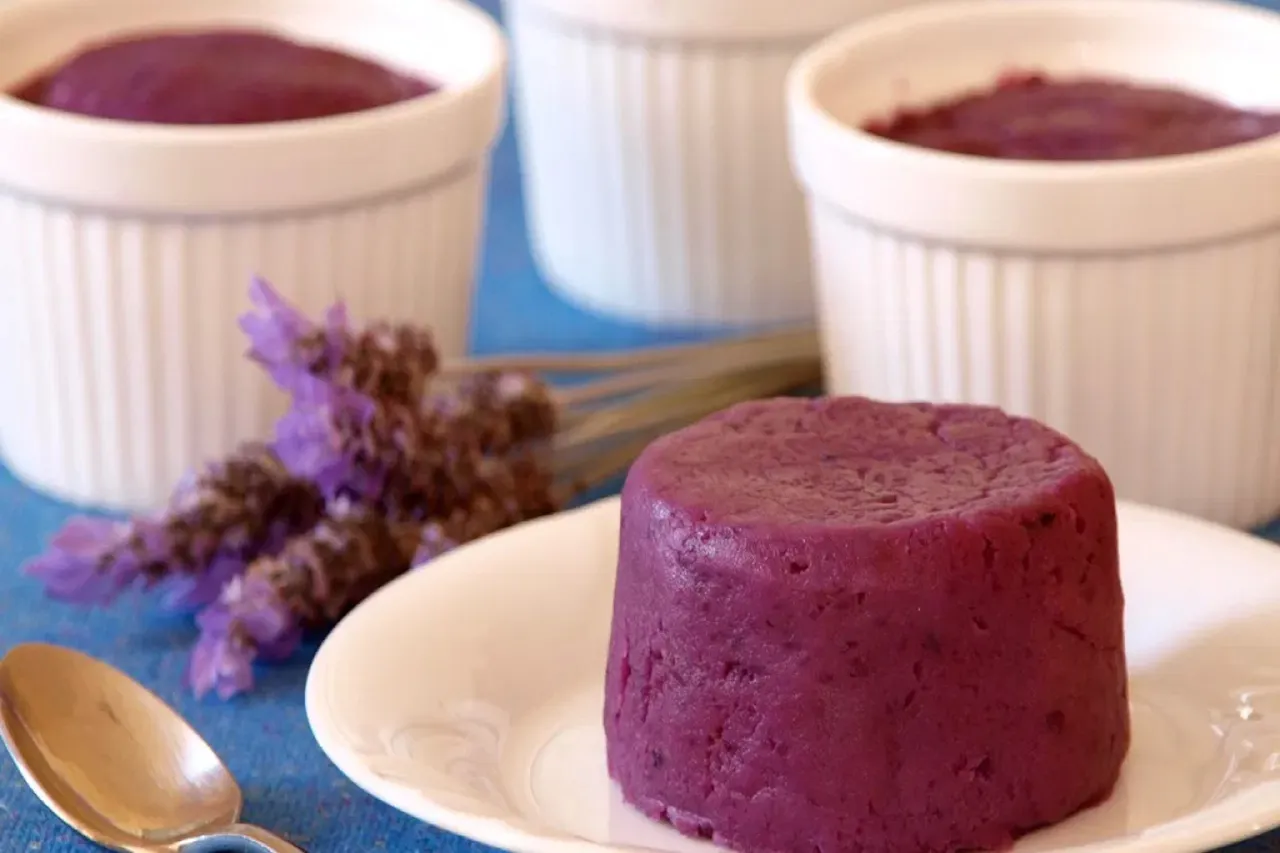
5. Ube Halaya
Is a Filipino dessert made from boiled and mashed purple yam. It is the main base in purple yam flavored pastries and ice cream. It can also be incorporated in other desserts such as Hallo-hallo. The main ingredient is peeled and boiled purple yam which is grated and mashed.
The mashed yam with condensed milk, originally sweetened coconut milk, are added to a saucepan where butter or margarine had been melted. The mixture is stirred until thickened. Once thickened, the mixture is cooled down and placed on a platter or into containers of various shapes.
It is typically served cold after refrigeration. Optional topping includes browned grated coconut ‘latik’ or condensed milk.
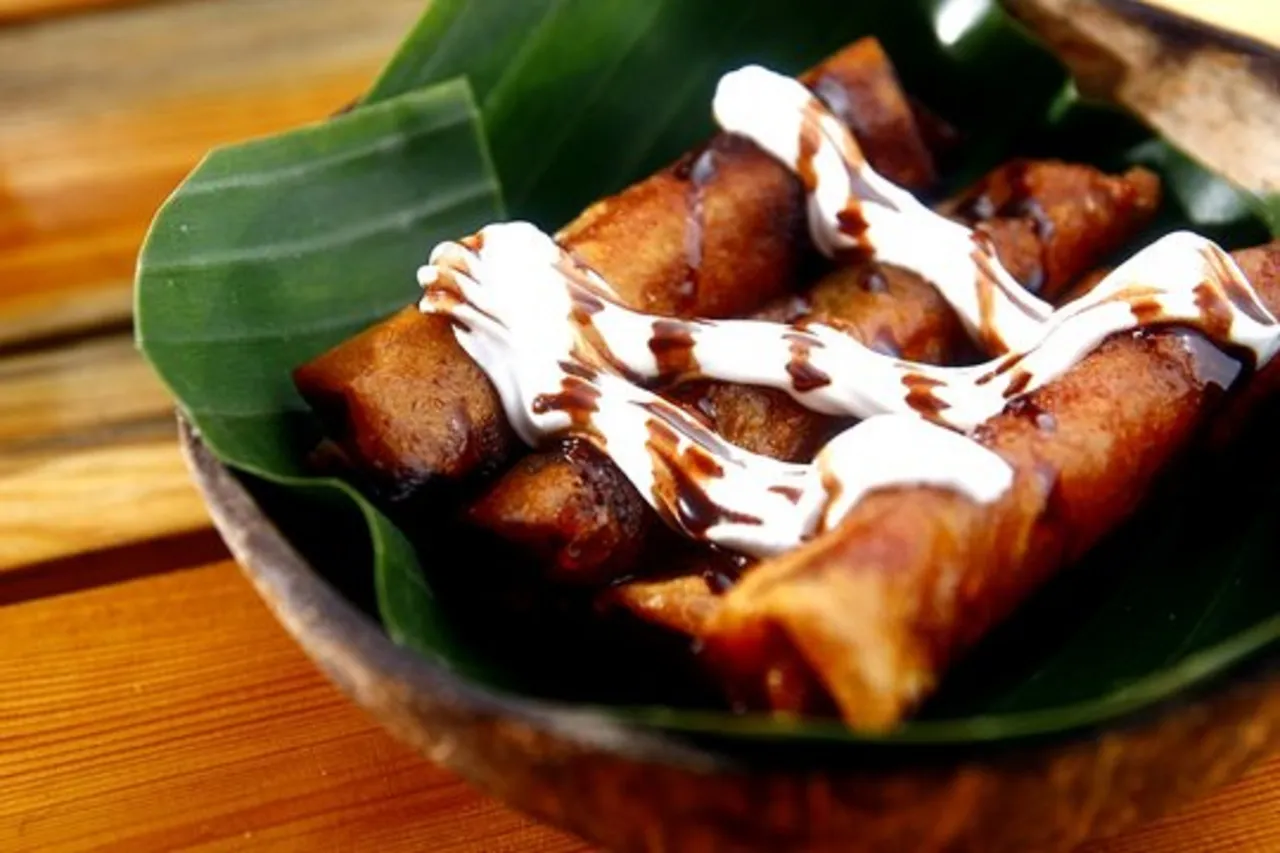
6. Turon
Is a Philippine snack made of thinly sliced bananas, dusted with brown sugar rolled in a spring roll wrapper and fried. Other fillings can also be used together with the banana most commonly jackfruit and also sweet potato, mango cheddar cheese, and coconut.
Turon is a popular snack and street food amongst Filipinos. These are usually sold along streets with some other desserts and snacks
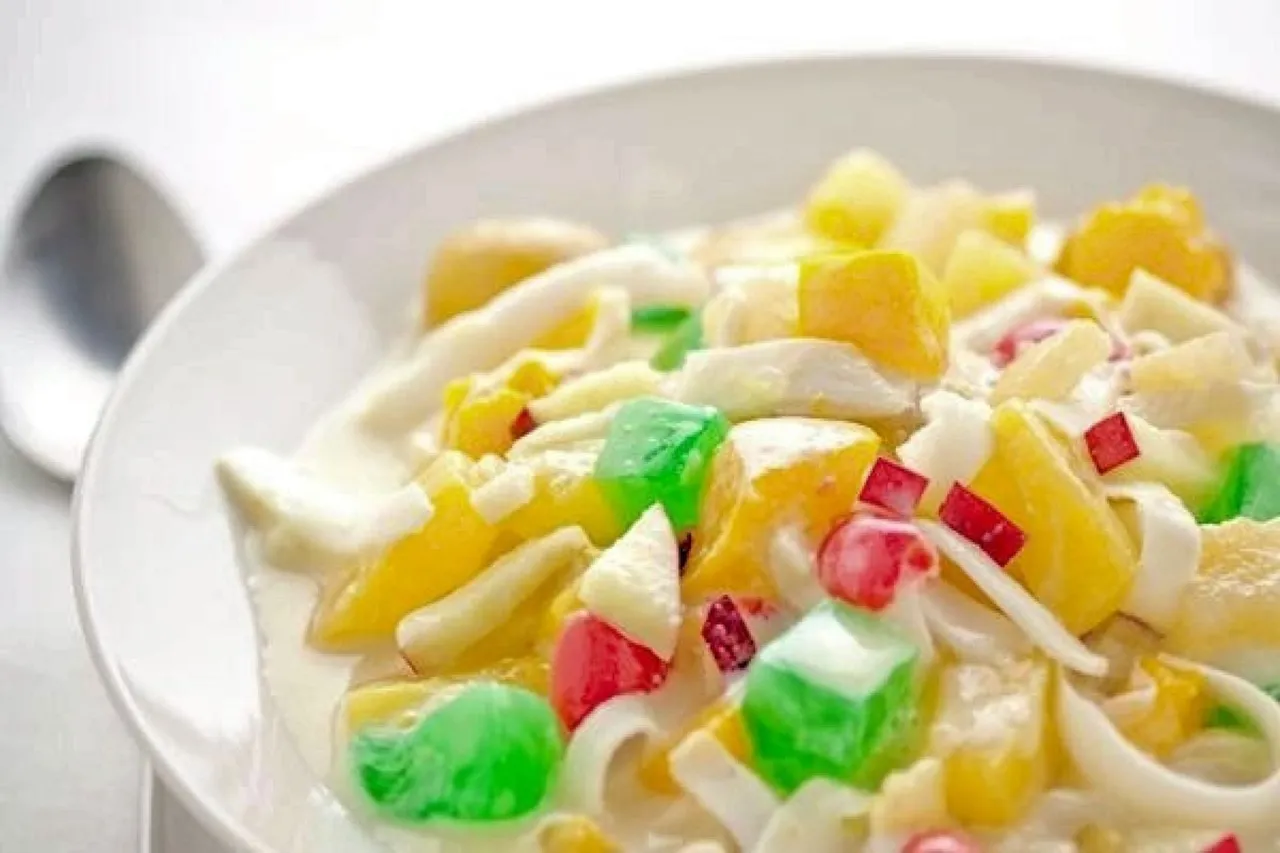
7. Buko Salad
Is the Filipino variation of the fruit salad. It is usually made out of mixed fruits nata de coco, sugar palm, coconut thickened cream, and condensed milk.
This dessert is a mainstay in every special occasion in the Philippines like birthdays, fiestas, weddings, Christmas and New Year's dinner.

8. Pichi Pichi
This is a Filipino dessert made from cassava, water, and sugar. The cassava is first peeled grated and washed.
The grated cassava is then mixed with water and sugar and the mixture is transferred into pans or modes which are then put in the steamer until the mixture is cooked and soft the cooked Pitse-pise can then be rolled on freshly grated coconut or topped with grated cheese and ‘latik’.
Some vendors add food coloring to the mixture prior to steaming to create colorful variants of the dessert.
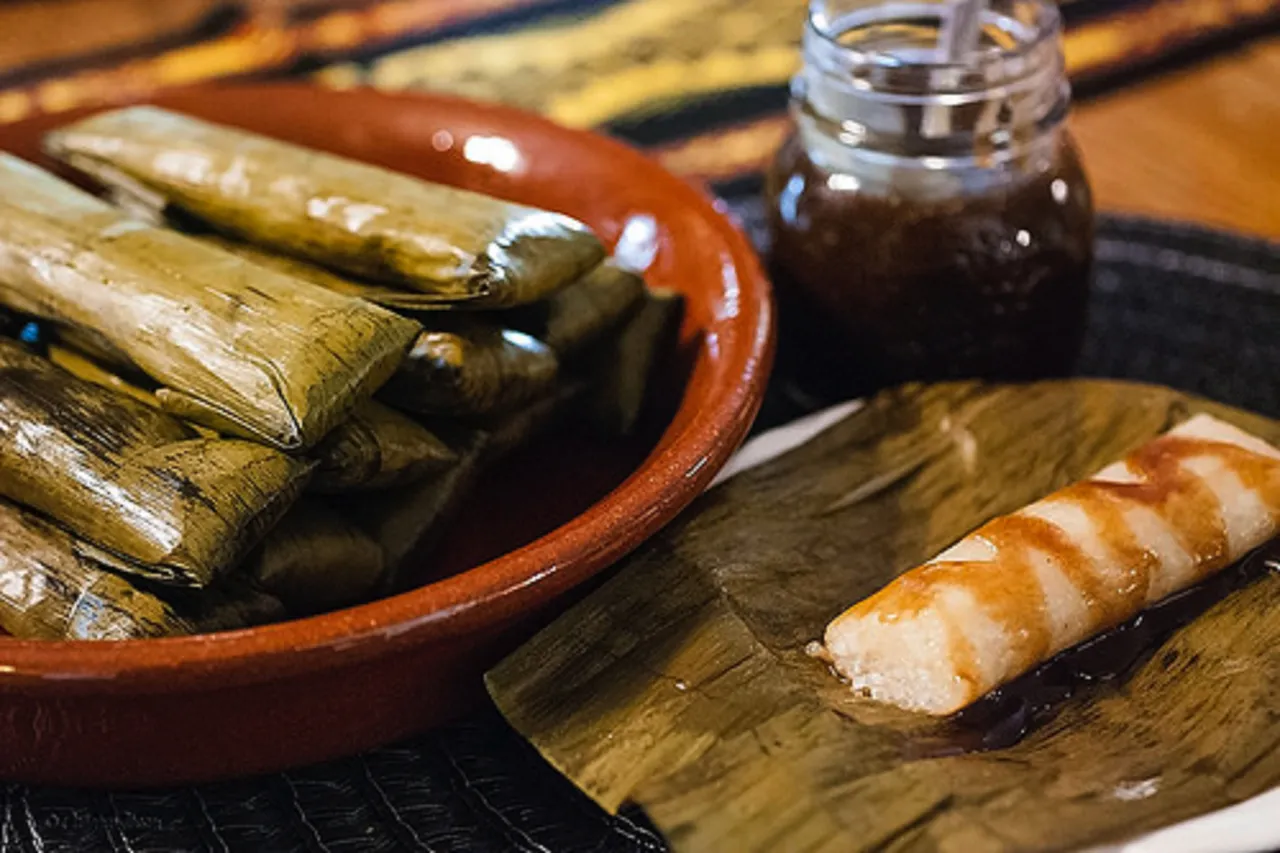
9. Suman
This is a rice cake originating in the Philippines. It is made from glutinous rice cooked in coconut milk often wrapped in banana leaves for steaming. it is usually eaten sprinkled with sugar or laden with Latik.
Suman is also known as ‘bud bud’ in the Visayan languages that dominate the central half of the country. A widespread variant of Suman uses cassava instead of glutinous rice.

10. Sorbetes
This is the traditional variation of ice cream made in the Philippines. Often cooled, dirty ice cream is usually served in small wafer or sugar cones and more recently bread buns. It is uniquely made from either coconut milk or ordinary milk.
Ice cream was introduced in the Philippines during the American occupation when refrigerators and other cooling devices were introduced. While American ice cream was made with cows milk, using the milk of the carabao resulted in a cheaper product which became known as sorbate dis both kinds of milk are widely used today.
Coconut milk and cassava flour are two other ingredients used that makes Sorbetes distinct from ice cream made in other countries. Flavors also varied from the usual natural fruits and plants such as mango, young avocado, melon, jackfruit, coconut, and strawberry.
Two flavours imitating commercial ice creams such as chocolate, cookies and cream, cheese, Macha, and more.
